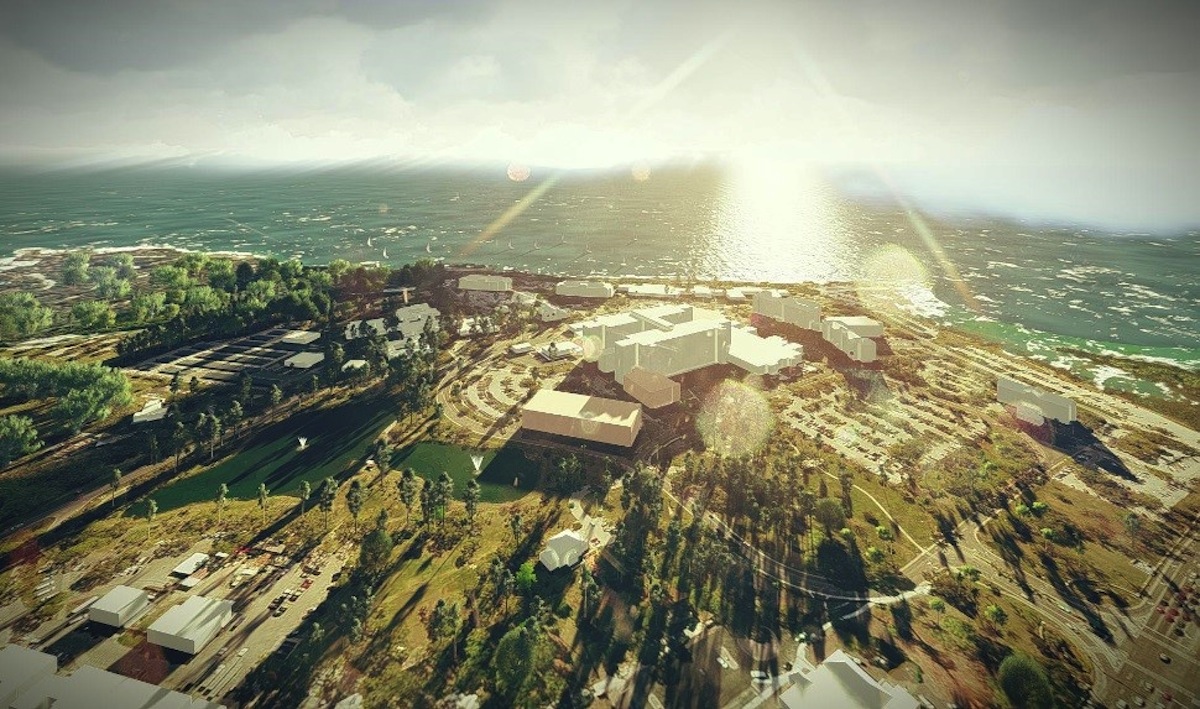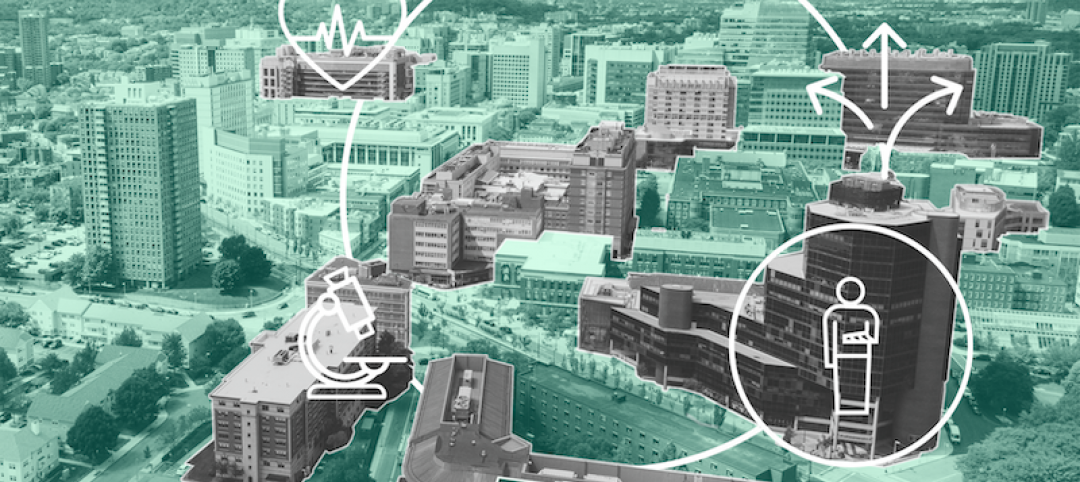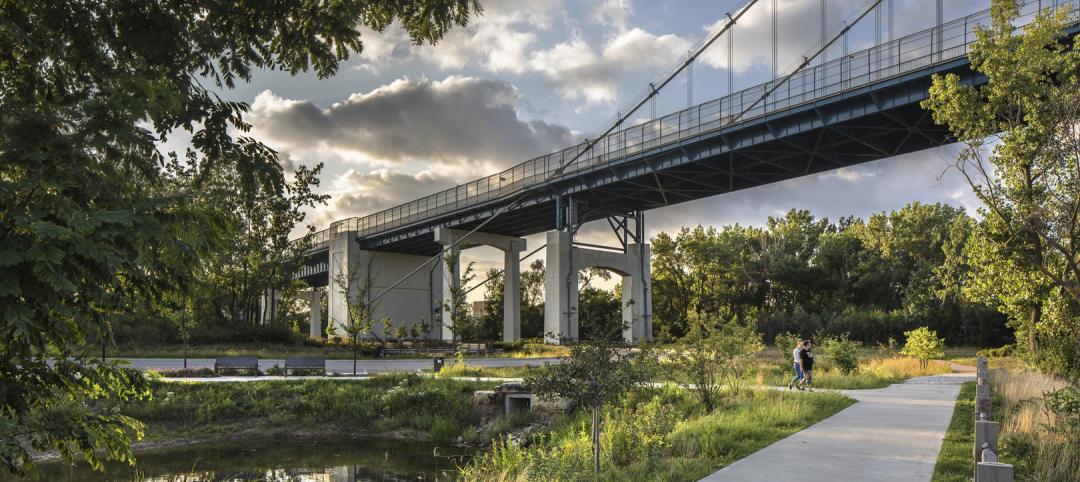As planners and designers, we help shape the physical world—a process that increasingly requires digital software to enable our planning and design work. Combined with traditional methods of design, these computerized tools have allowed us to provide a higher level of service to our clients.
We can now understand site context through geographic information systems (GIS), track and analyze space data through building information modeling (BIM), and create 3D visualizations using programs such as SketchUp.
"As GPUs become even faster, planners and designers will be able to dream up complex digital environments and interact with them like never before. Combined with virtual reality tools, we will be able to immerse ourselves in these visions before they become reality."
These capabilities continue to evolve thanks to the exponential advancements in computer processor power. Recent headlines marked the 50th anniversary of Moore’s Law, acknowledging the accuracy of Gordon Moore’s prediction that both the price and performance of silicon processors are on a constantly doubling trajectory, becoming ever more affordable and powerful. This concept doesn’t stop with silicon transistors, but applies to computing in general, from early vacuum tube computers to today’s 3D processors.
This all raises the question: What will this mean for the future of our profession and how we shape the physical world? There are a variety of advancements on the horizon that could revolutionize how we design urban spaces in the future.
GPUs are specialized chips that enable the rendering of computer graphics. Their power allows us to visualize three dimensional environments with increasing levels of realism and complexity. Programs like Lumion 3D use the power of GPUs to render, in near real-time, detailed three-dimensional landscapes.
As GPUs become even faster, planners and designers will be able to dream up complex digital environments and interact with them like never before. Combined with virtual reality tools, we will be able to immerse ourselves in these visions before they become reality. We’ll walk down alternative city streets and stroll through conceptual building lobbies before construction drawings are even started.
Technology is also extending our reach by helping us understand existing site conditions. Quadcopters and drone technology are already being used to map and photograph property. Today it’s easier than ever to take aerial photographs of a site using this technology. In the future, drones will be equipped with computer vision capabilities, allowing them to generate three-dimensional models of real places literally on-the-fly.
All of these technologies have been enabled by the exponential advancements in computing power over the past 50 years. During the next 50, these advances will not only reshape how we design urban spaces but also how we experience them, as the digital and physical worlds become more and more entangled.
About the Author: Stephen Conschafter is an urban designer and planner with a deep interest in the design of campuses and urban spaces. He is particularly focused on how data, scientific metrics, and technology can be applied to site design and long range planning for cities and campuses.
More from Author
SmithGroup | Oct 28, 2024
A case for mid-rise: How multifamily housing can reshape our cities
Often referred to as “five-over-ones,” the mid-rise apartment type is typically comprised of five stories of apartments on top of a concrete “podium” of ground-floor retail. The main criticism of the “five-over-one” is that they are often too predictable.
SmithGroup | Mar 28, 2023
Inclusive design requires relearning how we read space
Pulling from his experience during a campus design workshop, David Johnson, AIA, LEED AP, encourages architects to better understand how to design spaces that are inclusive for everyone.
SmithGroup | Feb 27, 2023
Surfing the Metaversity: The future of online learning?
SmithGroup's tour of the Metaversity gives us insight on bringing together physical and virtual campuses to create a cohesive institution.
SmithGroup | Nov 28, 2022
Data centers are a hot market—don't waste the heat!
SmithGroup's Brian Rener shares a few ways to integrate data centers in mixed-use sites, utilizing waste heat to optimize the energy demands of the buildings.
SmithGroup | Aug 3, 2022
Designing learning environments to support the future of equitable health care
While the shortage of rural health care practitioners was a concern before the COVID-19 pandemic, the public health crisis has highlighted the importance of health equity in the United States and the desperate need for practitioners help meet the needs of patients in vulnerable rural communities.
SmithGroup | Aug 10, 2021
Retail reset: The future of shopping malls
Developers and design partners are coming together to reimagine how malls can create a new generation of mixed-use opportunities.
SmithGroup | May 17, 2021
Future pandemic preparedness at the medical district scale
The current COVID-19 pandemic highlights the concern that we will see more emergency events in the coming years.
SmithGroup | Jan 25, 2021
Amid pandemic, college students value on-campus experience
All the students we interviewed were glad that they returned to campus in one form or another.
SmithGroup | Aug 13, 2020
Renewing the healing role of public parks
While we can’t accurately predict all the ways we will respond to the current COVID-19 pandemic, it should provide a moment of reflection as we see all too clearly the consequences of our exploitation and destruction of nature.
SmithGroup | Jul 21, 2020
How design of senior living communities must change after COVID-19
The cost of maintaining high quality of care and high quality of life for senior living communities has increased up to 73% for senior living communities that remain free of COVID-19 and up to 103% for COVID-19 positive senior living communities.
















